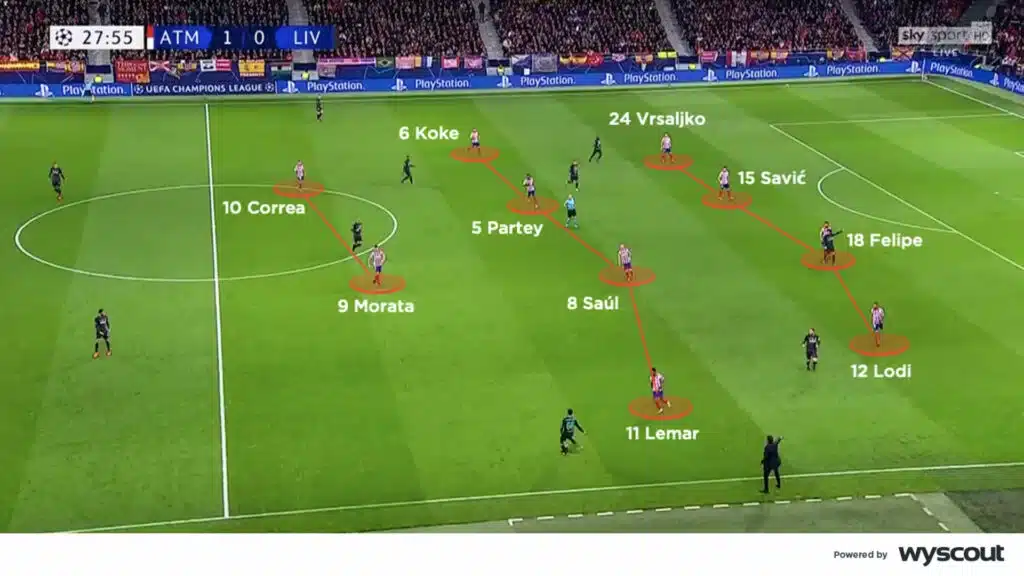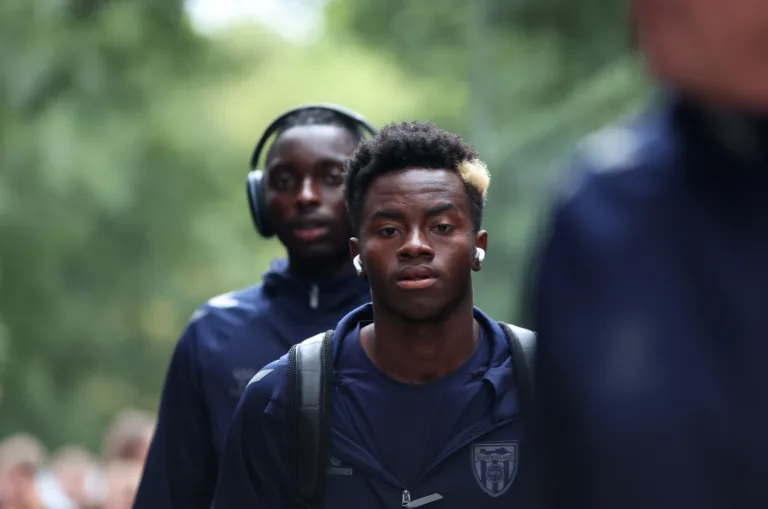Individual Brilliance, Tactical Instructions & The Keys To Success
Football, at its essence, is a simplistic sport. Eleven v Eleven, with the eleven with the better individuals profiled in the correct manner more often than not being the one that runs out the winners in the end. Luis Enrique’s resurgence with that simple 4-3-3 in the Champions League winning run proved that no matter how many new tactical instructions enter the game year on year and no matter how many buzzwords enter the sport, it’s very difficult to stop a well-oiled machine with simple instructions full of top-quality individuals that just want to win.
Pace and power win football matches. Defenders hate pace; even if you’re not that skilled with the ball at your feet, if you have space to run into, no matter who the defender in question is, they hate chasing you into that space. It’s a fundamental fear.
Maximising Potential:
If you’re in charge of a football team that has pace in any position on the pitch, your first call to action as a manager should be, How do we utilise this speed in the best fashion? Okay, we have a left full-back with the legs of a cheetah; how do we get him into the game to hurt the opposition? Simplistically? In my view, we push our winger inside and create that space for the full-back to drive into, whether that be with the ball at his feet or whether it be from a well-crafted ball in behind which sets our plan in motion. Simplistic instructions for a simplistic game, but the outcomes can be devastating.
Okay, we have three midfielders; two are very good on the ball, and one is very poor. Where do we want the one that’s poor? It depends, but you would arguably want him further up the pitch fighting for second balls as opposed to building in the double pivot where he can be targeted as a weakness in build-up and taken advantage of.
At the end of the day, you have the profile talent. If you step into a club, or even a Sunday League team, for example, where signing players is not something that’s readily available, do you moan that these players don’t fit your way of playing? Or do you alter your plan to fit the players at your disposal into it?
If you have three slow midfielders and you believe in a high pressing game, are you not doing those players a disservice by asking them to follow instructions they quite clearly cannot do? Should you not take the blame when the midfield gets overrun time and time again, or do you, as a manager, put the blame on these players carrying out instructions they clearly are not made to do?
People have developed obsessions with high lines and tactical overloads to the point where the beauty of the game may be dying. Tactics are important – so important, in fact – but footballers do not do well with overloads of information at any level.
Tactical Thoughts:

30 years ago the 4-4-2 was the best formation to play with, and even now it remains one of the best formations to press with. It allows you to go 2v2 against an opposition side that builds in a 2-4 or a 2-3, but the one downside of it is if the opposition are building in a midfield three, as you often have an overload 3v2 in that area. A 4-4-1-1 can help alleviate the overload in midfield, a simple iteration of the 4-4-2 which allows the ten on your team to drop back onto the six in the opposition, which can allow for a 3v3 centrally. This can suffocate opposition build-up, particularly if you have an intelligent pressing forward who can force the centre-backs one way, allowing you to do a Sean Dyche-style lock-off to force the opposition wide and long.
Many teams build in a 4-2-1-3 or a 2-4-1-3, depending on whatever way you look at it. In our Sunday League games, our coach decided a 4-1-4-1 is a nice way to combat this, man marking the man between the lines to stop him getting on the ball and dictating the game state. The aim, then again, is very simple: small, concise instructions. Can we lock off the pitch by asking our centre forward to press the right centre-back? Can our second striker or ten push onto the six, can we go 2v2 vs the central midfielders left free, and can our wide midfielder on the other side tuck in if needed?
The game plan is always to win – again, a nice quote from Sean Dyche. Defensively, how do we compress the pitch in a simplistic fashion to make the game tighter for the opposition and close the gaps for them to play in? Particularly if they’re a talented side. For instance, as mentioned, a 4-1-4-1 allows a m2m approach against a 2-4-1-3; the way the opposition bypasses this is by having a centre-back skilled at ball carrying. They’re not incredibly readily available, so you can gain a simple advantage by using this simple instruction. CF forces CB to one side; the rest of the team compress and shuffle across, rinse, and repeat.
Simplicity Is King:

As mentioned previously, players don’t like overloads of information. They’re on the pitch doing what they love, and they, in my opinion, will always react better to simplicity as opposed to overloads. Pep Guardiola is one of the best coaches ever, without a shadow of a doubt, but at times he can add too many instructions to a player’s game, and that can stifle creativity. Jack Grealish, although Guardiola is not the only victim in the winger’s current form, has been someone who has perhaps suffered from his game becoming overcomplicated at Manchester City, compared to the freedom and simplistic nature of how it was at Aston Villa.
There are examples of managers not playing to the strengths of their players, particularly more often than not at Manchester United than any other club, and that coming back to haunt them much later. Erik ten Hag’s deployment of Casemiro in his last season and a half at the club is the biggest example, as Ruben Amorim has proved the Brazilian was far from finished; he was just having to play a profile of player his attributes simply did not match.
Johan Cruyff said it best, “Playing football is very simple, but playing simple football is the hardest thing there is.”
Of course there is no correct way of playing football, and some players may do better with those overloads than others do, but by and large, simplistic instructions to each individual will help the collective perform better. Luis Enrique had the simple instruction of moving Achraf Hakimi outside the left-hand side press of Arsenal in the away game at the Emirates in the semi-final to great effect. People like to call this inverting a wing-back, and that’s of course what it is in essence, but it doesn’t have to be truly overanalysed. It’s merely manipulating space with a player he felt was a good fit to do so. Football is all about space manipulation. The best teams in the world manipulate space better than anyone else.
Teams have done this very simply against Erik ten Hag’s United last season. A simple instruction to sit outside the two-man pivot and just over the shoulder of the wide midfielder in the three-man press allowed you to crumble that system with the ease someone who wasn’t even a coach could clearly see.
Learning On The Job:
These are a couple of matchday plans I had written down for a game in our league this season against some of the better teams. For instance, Harding pressed 4-2-3-1 and built 2-4-1-3, so the plan was to go 4-1-4-1 and mark the ten between the lines. M2M press centrally. Where we got this wrong was by being too aggressive with our defensive line, with their striker being adept at running in behind, and our back line not being mobile enough to deal with that.
Also, our midfielders did not have the legs to carry out the M2M system for the entire 90 or even 60, which was an error on our part. Instructions worked well in the first half, as we went in 1-0 up and dominated the game, but once the legs went, with nobody on the bench, instructions should have changed and gone to a deeper block to limit the amount of space the midfield trio had to cover. Learning curves as a coach.
The system maximises the individuals. Individuals win football matches. How you profile those individuals determines how often you will win football matches. If you’re in a 4-4-2, can we lock one of our strikers on to the opposition six to stop them playing out? Can our CFs alternate this simple tactic between them for 90 minutes going side to side? Can our midfielders simply be brave in the pivot?
Just some thoughts. Simplicity is king.








